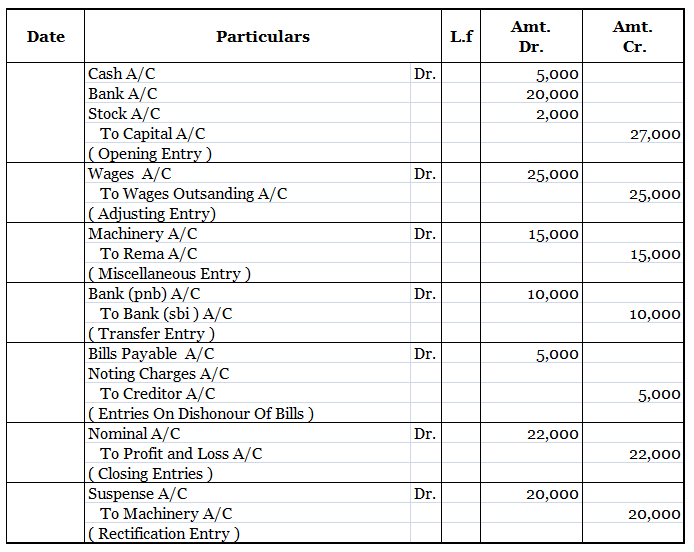The journal entry for asset purchase is- Particulars Amount Amount Asset A/c Dr $$$ To Bank A/c $$$ According to the Modern Approach for Assets Account: When there is an increase in the Asset, it is ‘Debited’. When there is a decreaseRead more
The journal entry for asset purchase is-
| Particulars | Amount | Amount |
| Asset A/c Dr | $$$ | |
| To Bank A/c | $$$ |
According to the Modern Approach for Assets Account:
- When there is an increase in the Asset, it is ‘Debited’.
- When there is a decrease in the Asset, it is ‘Credited’.
So the journal entry here is about the purchase of an asset and since there is an increase in Asset, the assets account will be debited as per the modern rule and due to the decrease of cash in the bank account, it will be credited.
For Example, Richard purchased furniture worth Rs 6,000 for his business.
I will try to explain it with the help of steps.
Step 1: To identify the account heads.
In this transaction, two accounts are involved, i.e. Furniture A/c and Bank A/c as Richard has acquired the furniture paying a certain amount.
Step 2: To Classify the account heads.
According to the modern approach: Furniture A/c is an Asset account and Bank A/c is also an Asset account.
According to the traditional approach: Furniture A/c is a Real account and Bank A/c is also a Real account.
Step 3: Application of Rules for Debit and Credit:
According to the modern approach: As asset increases because Furniture has been bought, ‘Furniture A/c’ will be debited. (Rule – increase in Asset is debited).
Bank account is also an Asset account. As the asset is in the form of cash decreases because the amount has been paid by cash or cheque, Bank account will be credited. (Rule – decrease in Asset is credited).
According to the traditional approach: Furniture A/c is a Real account and Bank is also a Real account, for which the rule to be applied is ‘Debit what comes in and Credit what goes out’. Furniture being asset comes in the business, so Furniture A/c will be debited and as cash goes out Bank A/c will be credited.
So from the above explanation, the Journal Entry will be-
| Particulars | Amount | Amount |
| Furniture A/c Dr | 6,000 | |
| To Bank A/c | 6,000 |
See less






The journal entry for the dividend collected by the bank is as follows: Bank A/c Dr. Amt To Dividend Received A/c Amt Here, Bank Account is debited and the Dividend Received Account is credited. This treatment is explained below. The logRead more
The journal entry for the dividend collected by the bank is as follows:
Here, Bank Account is debited and the Dividend Received Account is credited. This treatment is explained below.
The logic behind the journal entry
This can be explained through the following rules of accounting:
Golden rules of accounting
A bank account is a real account and the golden rule of accounting for the real account is, “Debit what comes in and credit what goes out”
Hence, the bank account is debited as the money is coming into the bank.
Dividend is an income hence dividend received is a nominal account. The golden rule of accounting for a nominal account is “Debit all expenses and losses and credit all income and gains”
Hence, the dividend received account is credited as income.
Modern rules of accounting
As per modern rules of accounting, a bank account is an asset account.
The asset account is debited when increased and credited when decreased.
Hence, the Bank account is debited here as it is increased.
A dividend received account is an income account.
The income account is credited when increase and debited when decreased.
Hence, the dividend received account is credited here as it is increased.
Treatment in the financial statements
Since the dividend received is an income; it is shown on the credit side of the Statement of profit and loss.
The bank account is an asset so it will be shown on the balance sheet.
See less